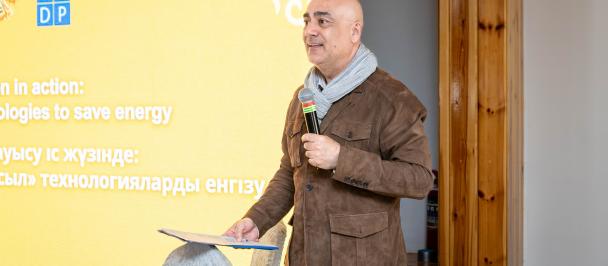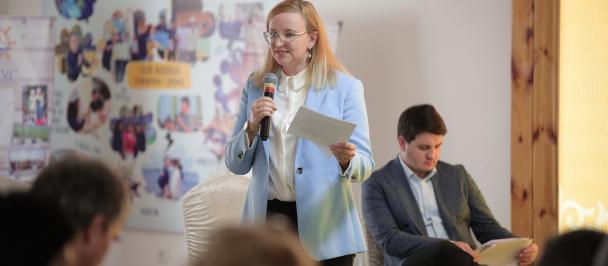An effective financing model for the modernization of multi-apartment residential buildings was implemented in the capital
April 14, 2023
The United Nations Development Programme (UNDP) in Kazakhstan has presented an effective model for financing energy-efficient modernization in pilot multi-apartment residential buildings. Five multi-apartment residential buildings located between Pushkin and Zhubanov Streets in Astana, which were built back in 1964, were selected for the pilot project.
The multi-apartment housing stock of the Republic of Kazakhstan is based on buildings built in 1960-1990. An important aspect of the sustainable development of the city remains the support, restoration and reconstruction of the old housing stock. This sector is the third largest consumer of heat and electricity after the energy sector and the manufacturing sector and consumes about 11 percent of electric energy and 40 percent of the released thermal energy.
"The pilot project is an important initiative that became possible thanks to the financial support of the Global Environment Facility (GEF), the commitment and support of the Ministry of Industry and Infrastructure Development of the Republic of Kazakhstan, the Akimat of Astana and the Akimat of the Baikonur district. I am proud of the result of this multilateral cooperation and I hope that the lessons and innovations developed and tested with the support of our joint projects will only expand and turn into a powerful wave of changes for the sustainable and low-carbon development of Kazakhstan,”says Sukhrob Khodjimatov, Deputy Resident Representative of the UNDP in Kazakhstan.
More than half of greenhouse gas emissions in the sector of heat and electricity supply of housing stock in Kazakhstan are accounted for heating of premises. According to expert estimates, about 60,000 multi-apartment residential buildings have thermal characteristics that do not meet modern requirements and require energy-efficient modernization.
"The results of the pilot project show that the housing and utilities sector has a significant energy saving potential - from 30 to 55 percent,"says Saule Inakhanova, Head of the Department for Energy Saving and Energy Efficiency of the Industrial Development Committee of the Ministry of Industry and Infrastructure Development of the Republic of Kazakhstan.
During the modernization, such measures as the insulation of the walls of the house and inter-panel seams, the restoration of drains and tides, the replacement of entrance doors and balcony structures were carried out. In the entrances, the old lighting devices were completely replaced with LED lighting, the heating system, hot and cold water supply were modernized with the replacement of pipelines and automated heating points (AHP) were installed. Financing of the model was provided from several sources, including apartment owners.
Before the implementation of the pilot project, experts together with representatives of the Akimat held explanatory work with residents of multi-apartment buildings. Experts note that the active participation of residents plays a crucial role in the reconstruction and property improvements.
"I've been having conversations with neighbors about the benefits of the changes. I had to explain everything in detail to every resident, to every elderly person, and I collected signatures of consent for repairs. Residents thought it would be very expensive for them. But everyone is happy, they see the advantages of modernization. Another big plus is that thanks to these repairs and changes, the apartments in our house have risen in price by a couple of million tenge,"said Natalya Poddubnaya, a resident of one of the houses.
A similar mechanism for co-financing measures to improve the energy efficiency of apartment buildings has also been tested in Temirtau. A number of measures were carried out: insulation of the roof, seams, basement ceiling, replacement of windows and entrances, installation of an automated heating point (AHP), balancing, insulation of the pipeline, as well as replacement of lighting fixtures. Some of the measures were implemented by attracting businesses that invested in modernization (AHP, lighting).The investments of the apartment owners were returned due to cost savings under the energy service contract model.
It should be noted that in 2017, UNDP and the Akimat of Astana signed a Memorandum of Understanding for the implementation of joint projects in the field of sustainable urban development through the introduction of energy-saving measures, smart city technologies, innovations in the field of management and public participation, prevention of natural emergencies.

 Locations
Locations



